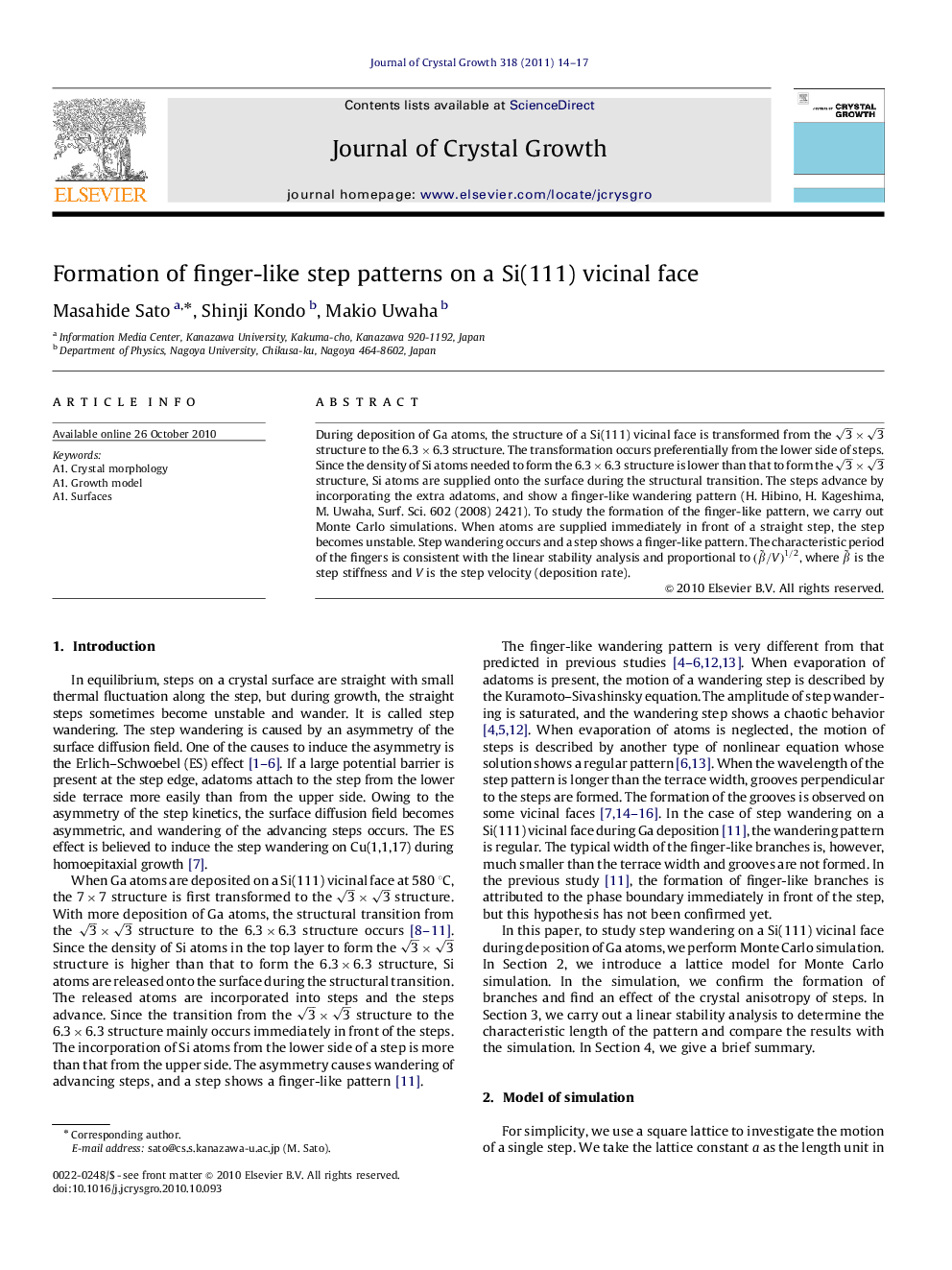| Article ID | Journal | Published Year | Pages | File Type |
|---|---|---|---|---|
| 10707292 | Journal of Crystal Growth | 2011 | 4 Pages |
Abstract
During deposition of Ga atoms, the structure of a Si(111) vicinal face is transformed from the 3Ã3 structure to the 6.3Ã6.3 structure. The transformation occurs preferentially from the lower side of steps. Since the density of Si atoms needed to form the 6.3Ã6.3 structure is lower than that to form the 3Ã3 structure, Si atoms are supplied onto the surface during the structural transition. The steps advance by incorporating the extra adatoms, and show a finger-like wandering pattern (H. Hibino, H. Kageshima, M. Uwaha, Surf. Sci. 602 (2008) 2421). To study the formation of the finger-like pattern, we carry out Monte Carlo simulations. When atoms are supplied immediately in front of a straight step, the step becomes unstable. Step wandering occurs and a step shows a finger-like pattern. The characteristic period of the fingers is consistent with the linear stability analysis and proportional to (βË/V)1/2, where Î²Ë is the step stiffness and V is the step velocity (deposition rate).
Related Topics
Physical Sciences and Engineering
Physics and Astronomy
Condensed Matter Physics
Authors
Masahide Sato, Shinji Kondo, Makio Uwaha,
